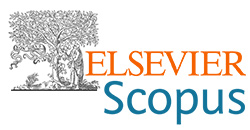Reinforce the surface properties of domestic garbage activated carbon by low temperature plasma accustomed in energy storage applications
DOI:
https://doi.org/10.62638/ZasMat1000Abstract
Since activated carbon is a highly porous material with a sizable internal surface area, it is simple to adsorb a wide range of substances when used in energy storage devices, sewage treatment, water purification, catalyst, food processing and other applications. This work focuses on the viability of using mixed fruit peels as a precursor for the carbonization process with physical activation to produce activated carbon. The Phase confirmation was examined using X-ray diffraction (XRD). Fourier transform infrared spectrometer (FTIR) concludes the functional groups present in mixed fruit peels activated carbon. Field emission scanning electron microscopy (FESEM) was used to analyze the morphological makeup and textural traits of the activated carbon that was produced. Energy Dispersive X-Ray Analysis (EDX) shows the elemental composition of nano powdered carbon. Raman spectroscopy confirms the presence of graphene that appears at 1580cm-1. Electrochemical Impedance Spectroscopy (EIS) and Nyquist plot in order to evaluate the conductivity performance over the frequency range of 1mHz to 10 kHz, measurements were used.
Carbon yield analysis were conducted and analyzed. Wettability of the mixed fruit peels were examined using contact angle. The Mixed Fruit peels activated carbon were subjected to low temperature plasma to increase its surface properties, The outcomes were evaluated, and the charge transfer resistance and the polarization resistance for air plasma treatment is 1.43 and 0.2 ohms. Hydrophilic nature is occurred when treated with air plasma. According to these findings, air plasma treatment of mixed fruit peel activated carbon improves its surface characteristics, making it suitable for electrode in energy storage applications.
Keywords:
Mixed fruit peels, physical activation, low temperature plasma, surface modification, Nano powderReferences
K.F.Azlan Zahari, U.K.Sahu, T.Khadiran, S.N.Surip, Z.A.ALOthman, A.H.Jawad (2022) "Mesoporous Activated Carbon from Bamboo Waste via Microwave-Assisted K2CO3 Activation: Adsorption Optimization and Mechanism for Methylene Blue Dye. Separations, 9(12), 390.
https://doi.org/10.3390/separations9120390
J.B.Njewa, E.Vunain, T.Biswick (2022) Synthesis and Characterization of Activated Carbons Prepared from Agro-Wastes by Chemical Activation J Chem, vol. 2022, ID 9975444.
https://doi.org/10.1155/2022/9975444
P. D. Pathak, S.A.Mandavgane, B.D.Kulkarni (2015) Fruit peel waste as a novel low-cost bio adsorbent. Reviews in Chemical Engineering, 31(4), 361-381.
https://doi.org/10.1515/revce-2014-0041
K.Surya, M.S.Michael (2021) Hierarchical porous activated carbon prepared from biowaste of lemon peel for electrochemical double layer capacitors. Biomass Bioenergy, 152, 106175.
https://doi.org/10.1016/j.biombioe.2021.106175
M. A.Fayza S.Hashem, Kh. M Al-qahtani,F.Foziah, Al-Fawzan (2016) Comparative Study on Activated Carbon Prepared from Various Fruit Peels. Fayza S Hashem, Khairia M Al-qahtani, Foziah F Al-Fawzan, Mashael Alshabanat, 5(3), 2750-2759.
A.Ehsani, H.Parsimehr (2020) Electrochemical Energy Storage Electrodes via Citrus Fruits Derived Carbon: A Minireview. Chemical Record, 20(8), 820-830.
https://doi.org/10.1002/tcr.202000003
H.Rustamaji, T.Prakoso, H.Devianto, P. Widiatmoko, W.H.Saputera (2022) Urea nitrogenated mesoporous activated carbon derived from oil palm empty fruit bunch for high-performance supercapacitor. J Energy Storage, 52, 104724.
https://doi.org/10.1016/j.est.2022.104724
R.K.Gupta, M.Dubey, P.Kharel, Z.Gu, Q.H.Fan (2015) Biochar activated by oxygen plasma for supercapacitors. J Power Sources, 274, 1300-1305.
https://doi.org/10.1016/j.jpowsour.2014.10.169
W.M.Chang, C.C. Wang, C.Y.Chen (2015) Plasma Treatment of Carbon Nanotubes Applied to Improve the High Performance of Carbon Nanofiber Supercapacitors. Electrochim Acta, 186, 530-541.
https://doi.org/10.1016/j.electacta.2015.11.038
C.Saka (2018) Overview on the Surface Functionalization Mechanism and Determination of Surface Functional Groups of Plasma Treated Carbon Nanotubes. Crit Rev Anal Chem, 48(1), 1-14.
https://doi.org/10.1080/10408347.2017.1356699
R.Wolf, A.C.Sparavigna (2010) Role of Plasma Surface Treatments on Wetting and Adhesion. Engineering, 02(06), 397-402.
https://doi.org/10.4236/eng.2010.26052
S.A.Gupta et al (2022) Adsorption isotherm studies of Methylene blue using activated carbon of waste fruit peel as an adsorbent. Mater Today Proc, 57, 1500-1508.
https://doi.org/10.1016/j.matpr.2021.12.044
W. Saadi, S.Rodríguez-Sánchez, B. Ruiz, S. Najar-Souissi, A. Ouederni, E. Fuente (2022) "From pomegranate peels waste to one-step alkaline carbonate activated carbons. Prospect as sustainable adsorbent for the renewable energy production. J Environ Chem Eng, 10(1), 107010.
https://doi.org/10.1016/j.jece.2021.107010
M.T.Amin, A. A.Alazba, M.Shafiq (2018) Removal of Copper and Lead using Banana Biochar in Batch Adsorption Systems: Isotherms and Kinetic Studies. Arab J Sci Eng, 43(11), 5711-5722.
https://doi.org/10.1007/s13369-017-2934-z
E.S.Ngankam, L. Dai-Yang, B. Debina, A.Baçaoui, A. Yaacoubi, A.N.Rahman (2020) Preparation and Characterization of Magnetic Banana Peels Biochar for Fenton Degradation of Methylene Blue. Materials Sciences and Applications, 11(06), 382-400.
https://doi.org/10.4236/msa.2020.116026
V.Balasubramanian, T.Daniel, J.Henry, G. Sivakumar, K.Mohanraj (2020) Electrochemical performances of activated carbon prepared using eggshell waste. SN Appl Sci, 2(1), 62-69.
https://doi.org/10.1007/s42452-019-1921-2
K.A.Vijayalakshmi, K.Vignesh, N.Karthikeyan (2015) Synthesis and surface characterization of bamboo charcoal carbon using low temperature plasma treatment. Materials Technology, 30(A2), A99-A103.
https://doi.org/10.1179/17535557A15Y.000000005
M. D. Mehare, A. D.Deshmukh, S.J.Dhoble (2021) Bio-waste lemon peel derived carbon based electrode in perspect of supercapacitor. Journal of Materials Science: Materials in Electronics, 32(10), 14057-14071.
https://doi.org/10.1007/s10854-021-05985-5
B.Smith (2018) Infrared spectral interpretation: A systematic approach," Infrared Spectral Interpretation: A Systematic Approach., book, Pub. Location,Boca Raton, p.1-304.
https://doi.org/10.1201/9780203750841-1
D.Ramutshatsha-Makhwedzha, A. Mavhungu, M. L. Moropeng, R.Mbaya (2022) Activated carbon derived from waste orange and lemon peels for the adsorption of methyl orange and methylene blue dyes from wastewater. Heliyon, 8(8), e09930.
https://doi.org/10.1016/j.heliyon.2022.e09930
S. Saveetha, K. A.Vijayalakshmi (2022) Influence of Low temperature Plasma on activated bamboo charcoal employed in energy storage system., 16(1001), 12-22.
T.V.Nagalakshmi, K.A.Emmanuel, Ch.Suresh Babu, Ch.Chakrapani, P.P.Divakar (2015) Preparation of Mesoporous Activated Carbon from Jackfruit PPI-1 Waste and Development of Different Surface Functional Groups. International Letters of Chemistry, Physics and Astronomy, 54, 189-200.
https://doi.org/10.56431/p-957378
K. A.Vijayalakshmi, S.Saveetha (2020) Enhancing the dielectric properties of activated bamboo charcoal under the exposure of DC glow discharge plasma. Mater Today Proc, 43, 1456-1459.
https://doi.org/10.1016/j.matpr.2020.09.298
C.K.Ranaweera, P.K.Kahol, M.Ghimire, S.R. Mishra, R.K.Gupta (2017) Orange-Peel-Derived Carbon: Designing Sustainable and High-Performance Supercapacitor Electrodes. C (Basel), 3(4), 25-37.
https://doi.org/10.3390/c3030025
O.Kazak, Y.R.Eker, H. Bingol, A.Tor (2017) Novel preparation of activated carbon by cold oxygen plasma treatment combined with pyrolysis. Chemical Engineering Journal, 325(1), 564-575.
https://doi.org/10.1016/j.cej.2017.05.107
P.Wang, Q.Wang, G.Zhang, H.Jiao, X.Deng (2015) Promising activated carbons derived from cabbage leaves and their application in high-performance supercapacitors electrodes. J. of Solid State Electroch., 20(2), 319-325.
https://doi.org/10.1007/s10008-015-3042-1
G. Ghanashyam, H. K.Jeong (2021) Plasma treated carbon nanofiber for flexible supercapacitors. J Energy Storage., 40, 102806.
https://doi.org/10.1016/j.est.2021.102806
Y.C.Hong, D. H. Shin, S. C.Cho, H.S.Uhm (2006) Surface transformation of carbon nanotube powder into super-hydrophobic and measurement of wettability. Chem Phys Lett., 427(4-6), 390-393.







